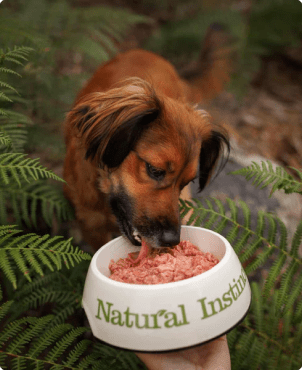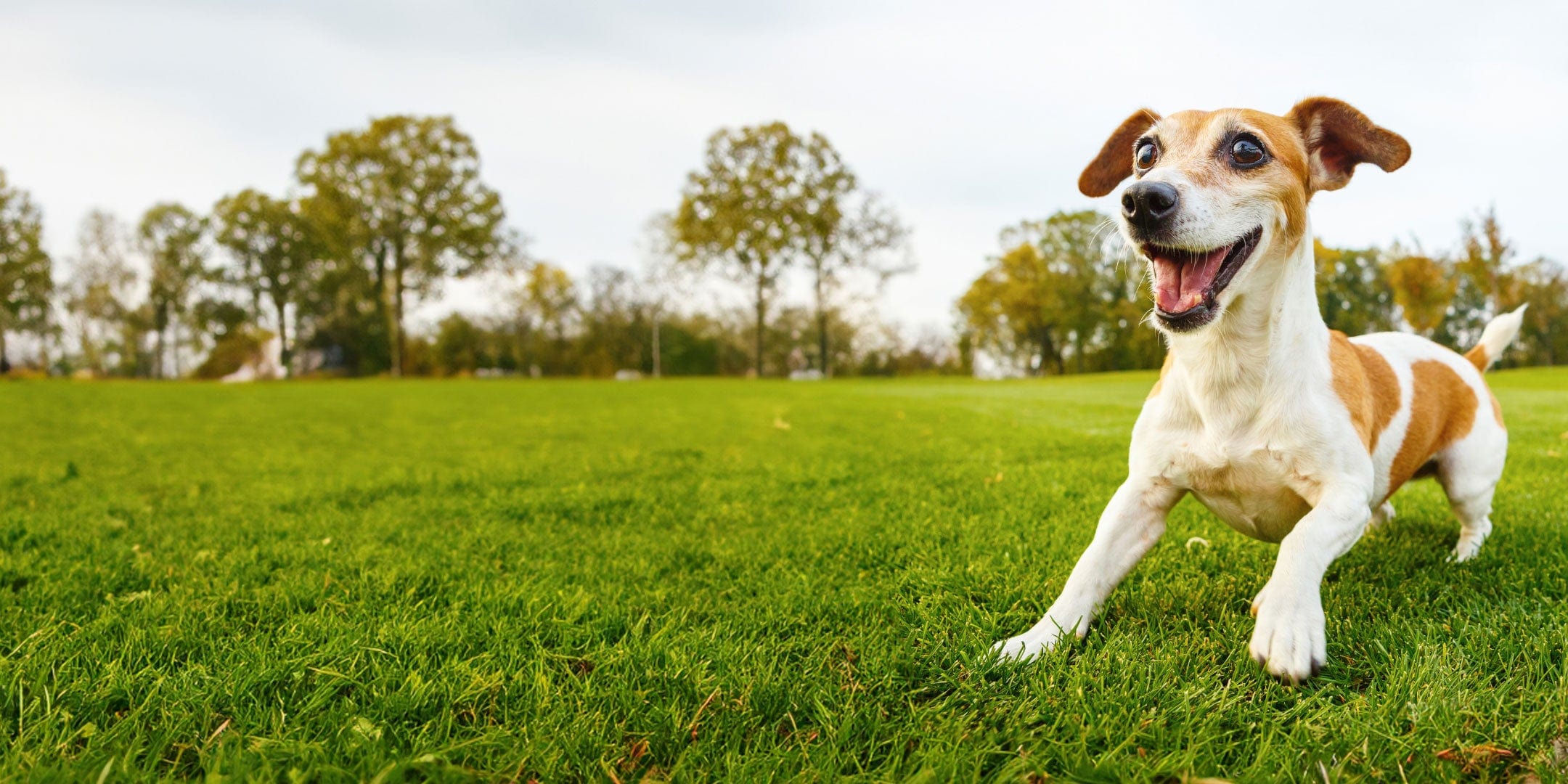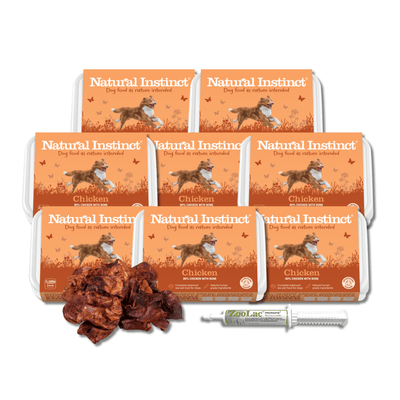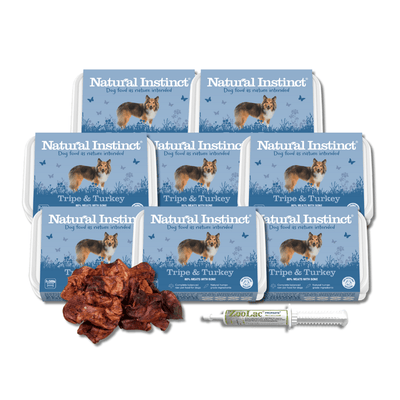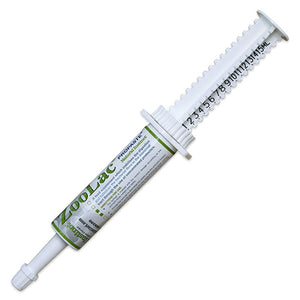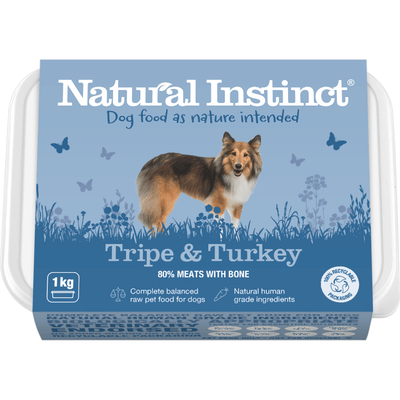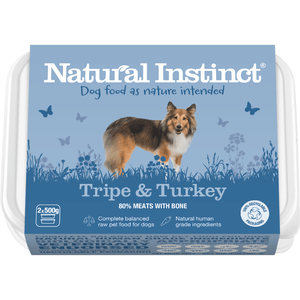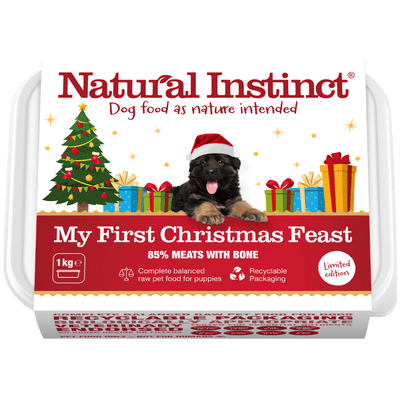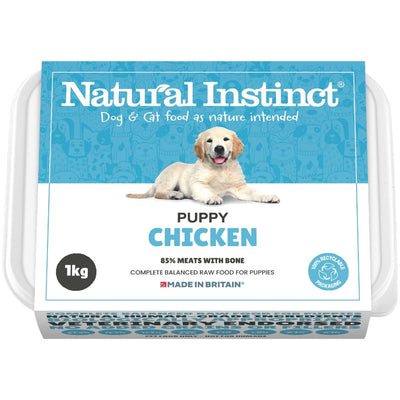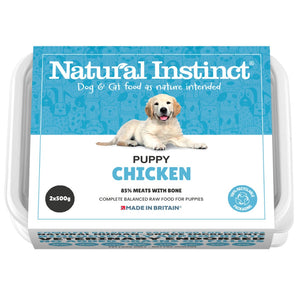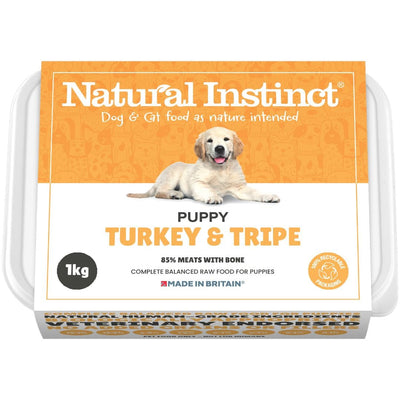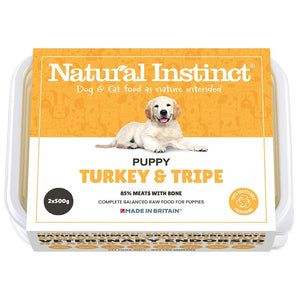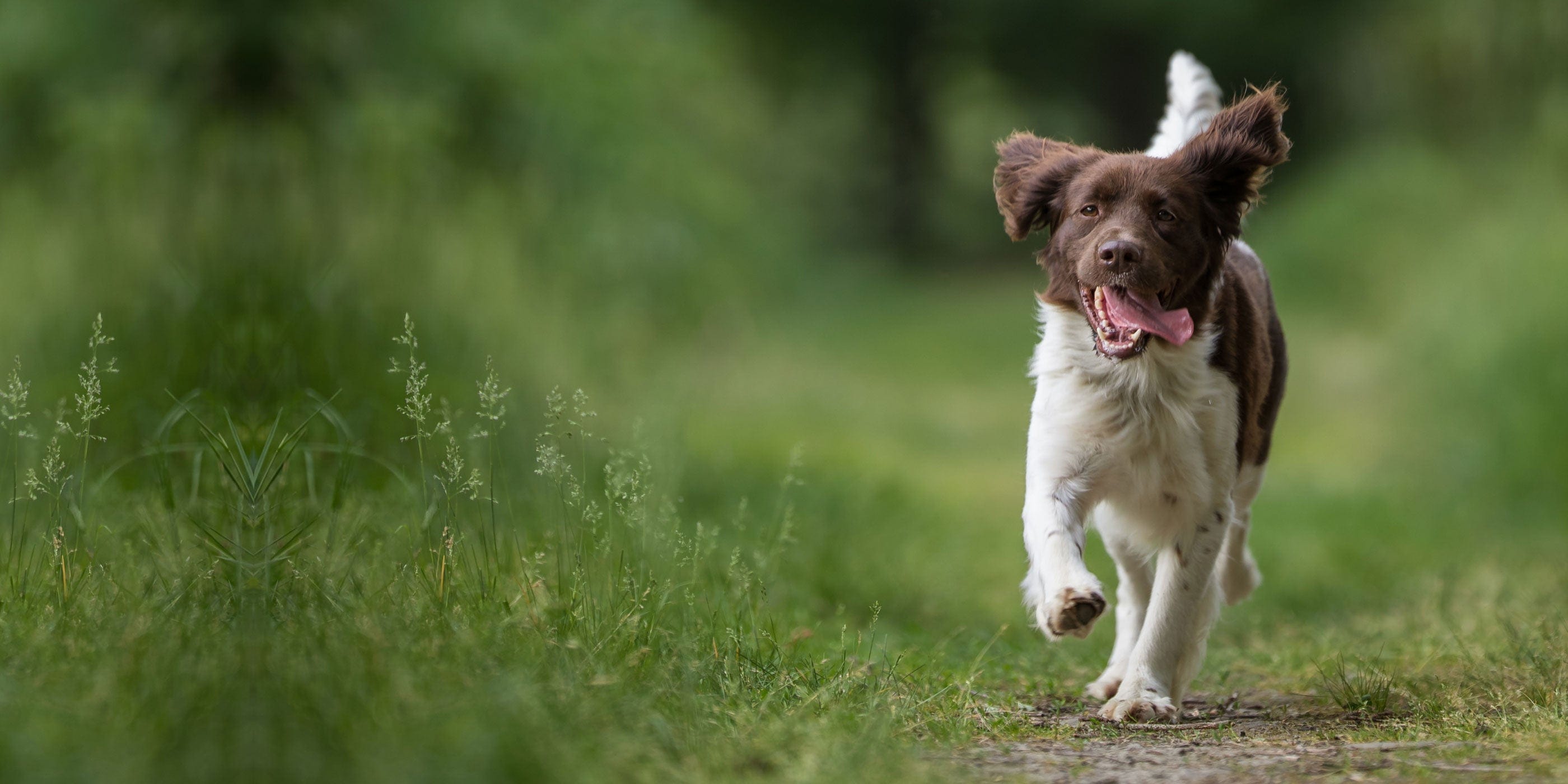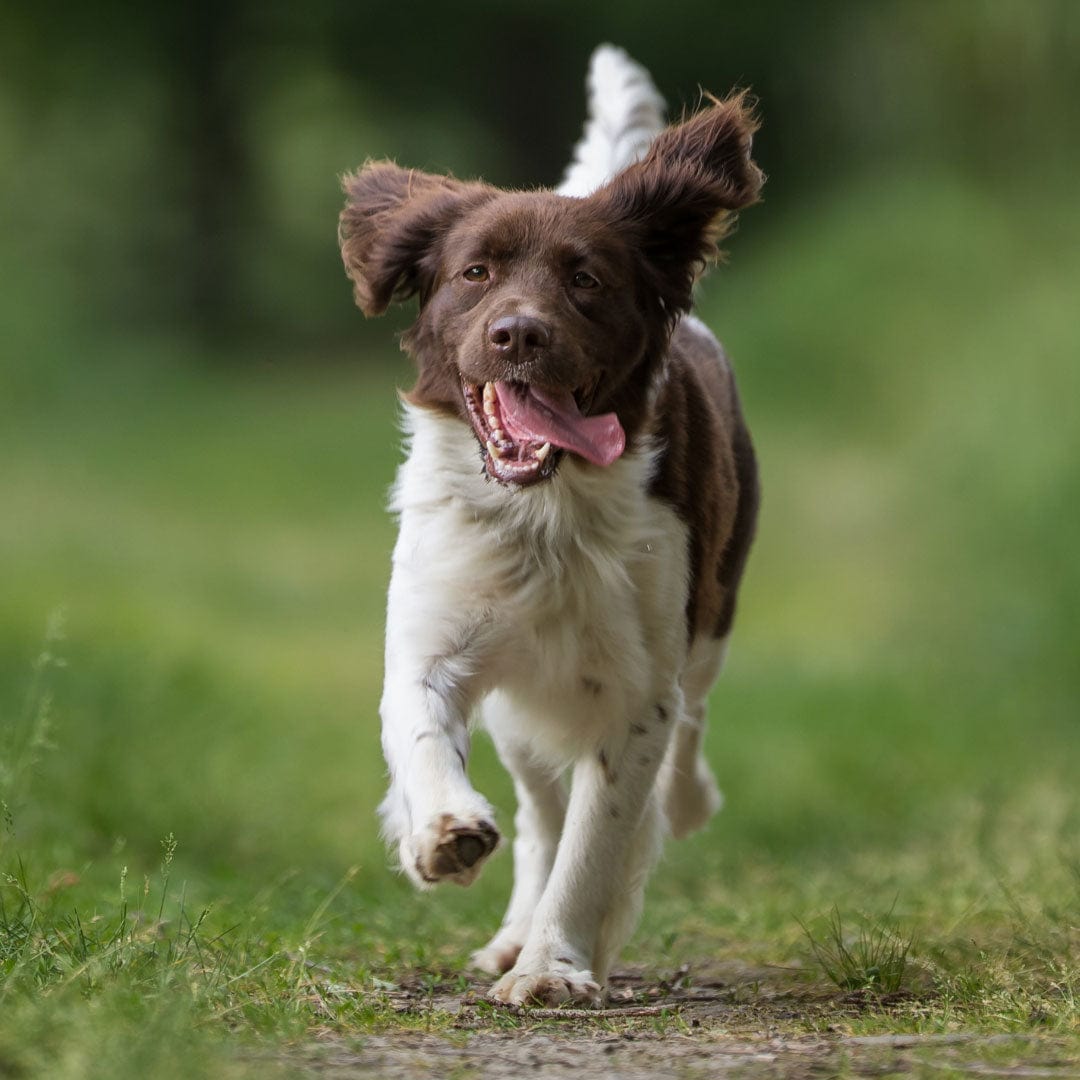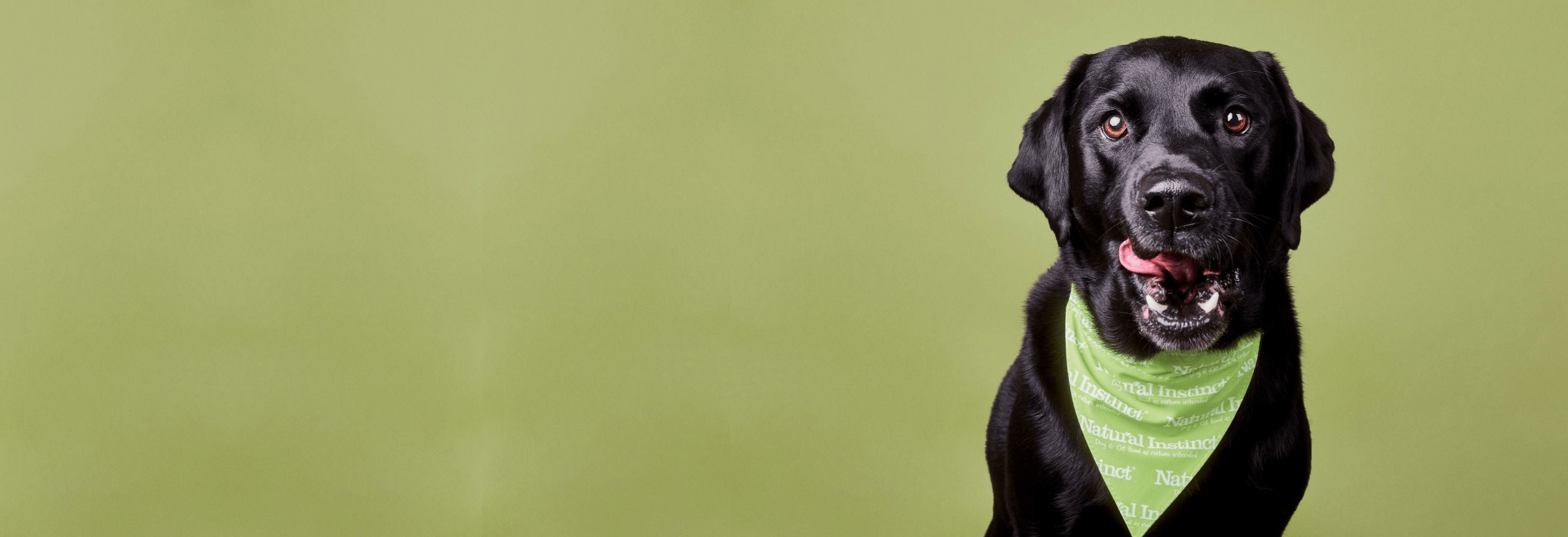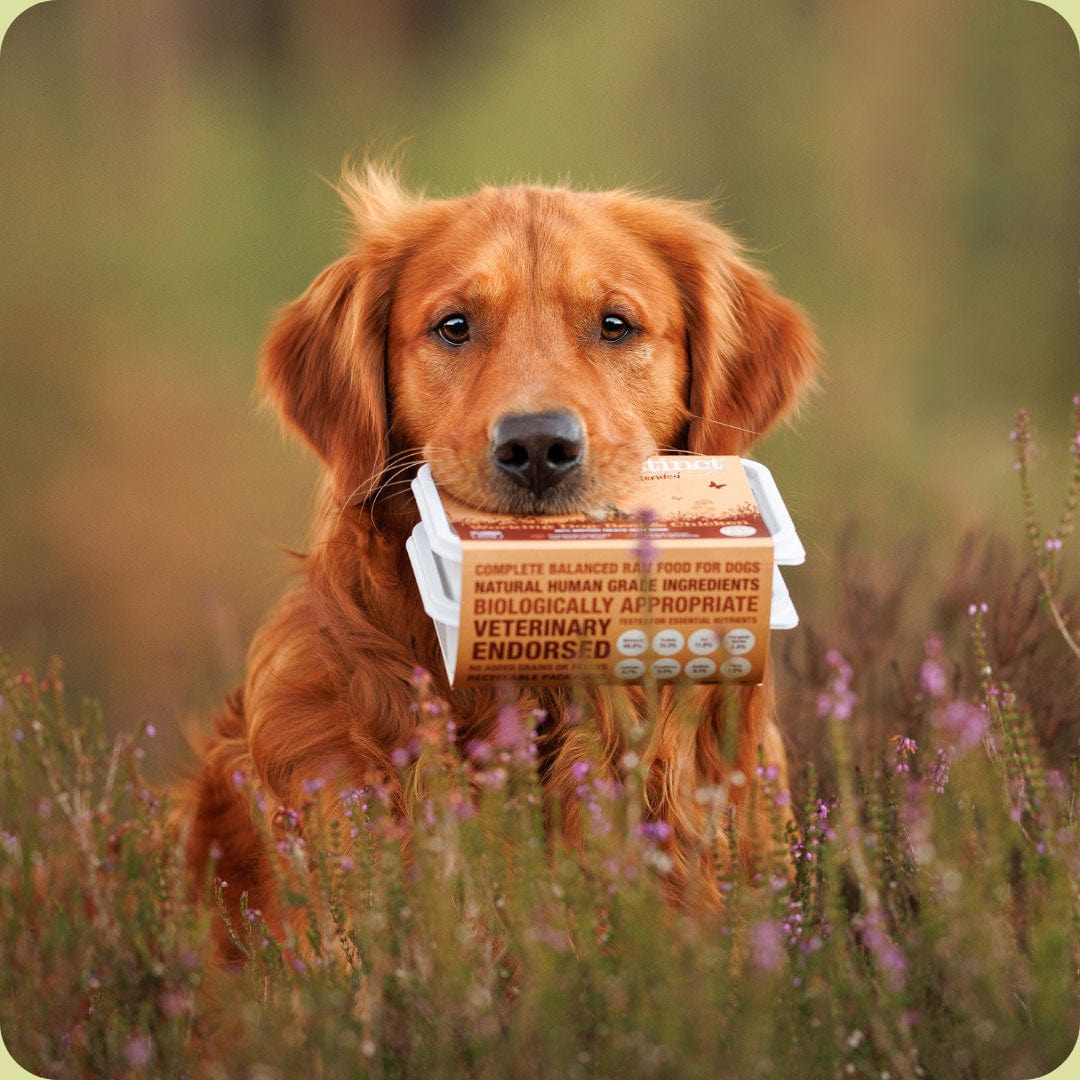
What is a raw diet?
We are convinced that a healthy diet plays a massive role in not only our own lives but the lives of our pets, too! We believe it is their best natural option, feeding as nature intended, free from artificial additives, colours, preservatives and fillers. That is exactly what we produce for your pets – the most delicious, natural, complete frozen meals full of goodness and high-value nutrients.
How do I make the transition to raw?
The ideal for all dogs and cats is that the transition is trouble-free, with no periods of excessive wind, diarrhoea, or constipation.
To achieve this, the best way to transition dogs and cats from a high carbohydrate processed diet to a low carbohydrate, high protein raw meat and bone diet is to do a gradual transition over 7-10 days.
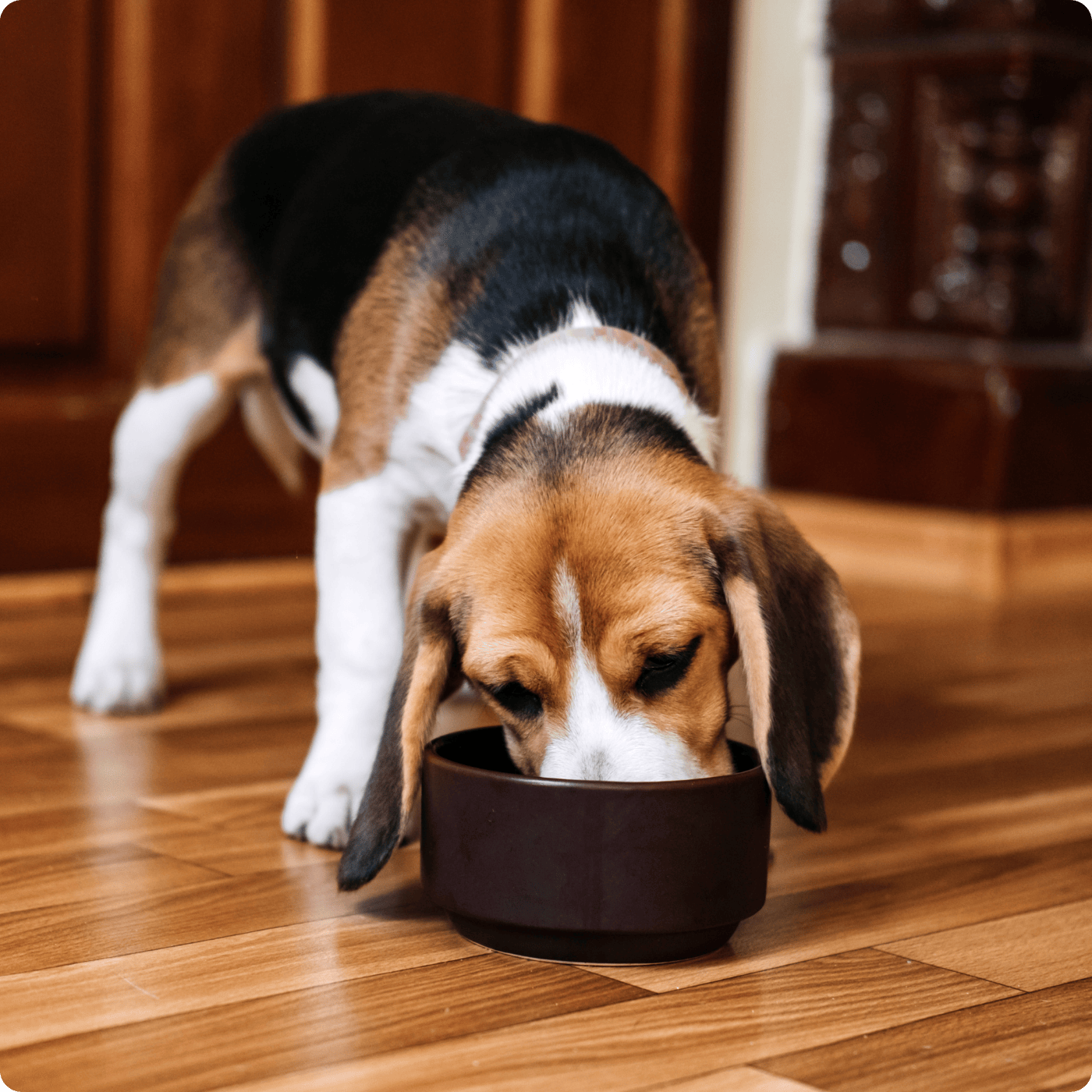
Let's get started
Day 1
This is the exciting start! Take a spoon, the size of which will depend on the size of your dog or cat. For example, a teaspoon is recommended for a toy breed and a tablespoon for a large breed. Taking that spoon, replace a spoonful of your dog or cat’s current food with a spoonful of raw at each mealtime.
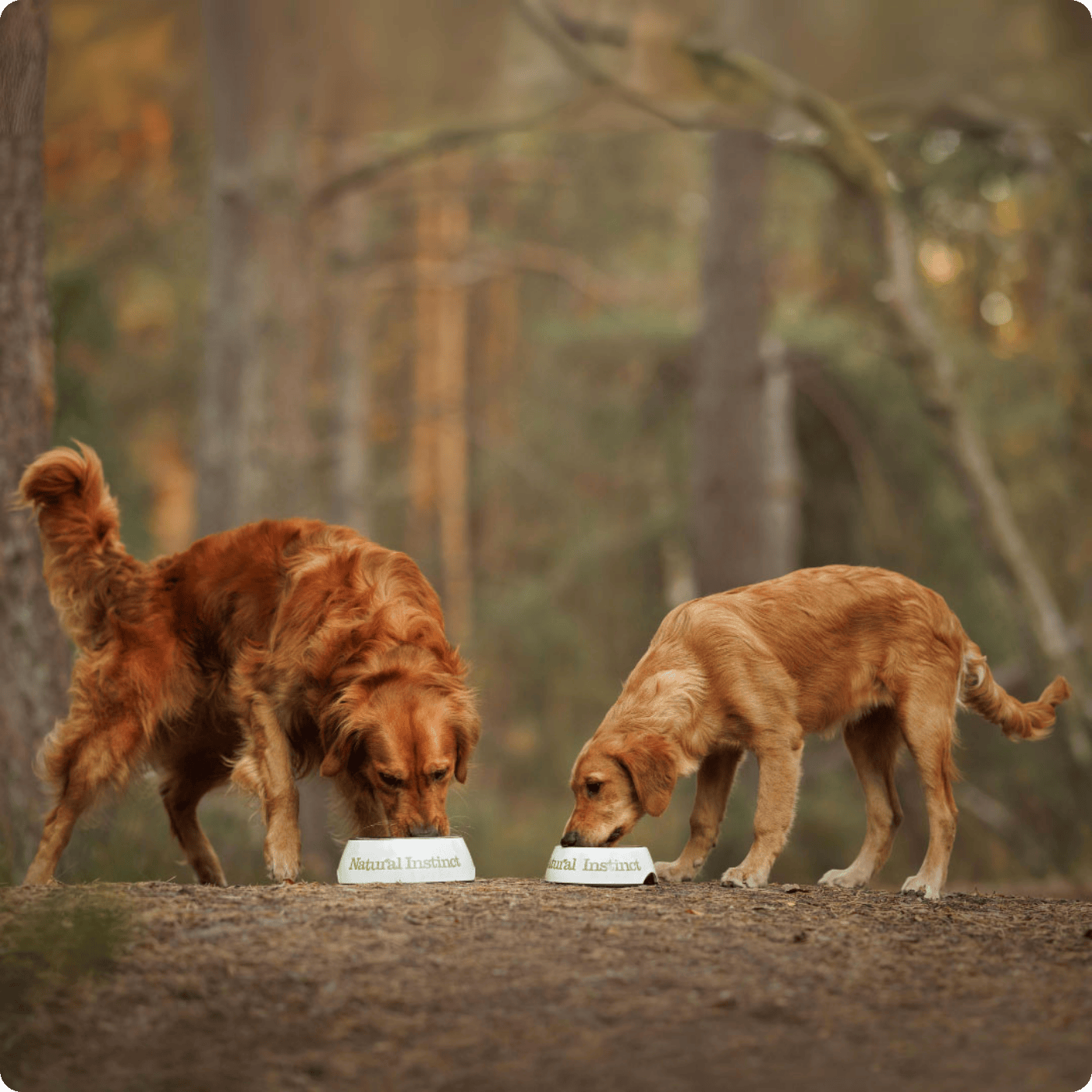
You're on the right track
Day 2
Following on from day 1, we would recommend increasing 1 spoonful amount per day, for example, day 2 you would introduce 2 spoonfuls of raw and decrease the equivalent of their current food.
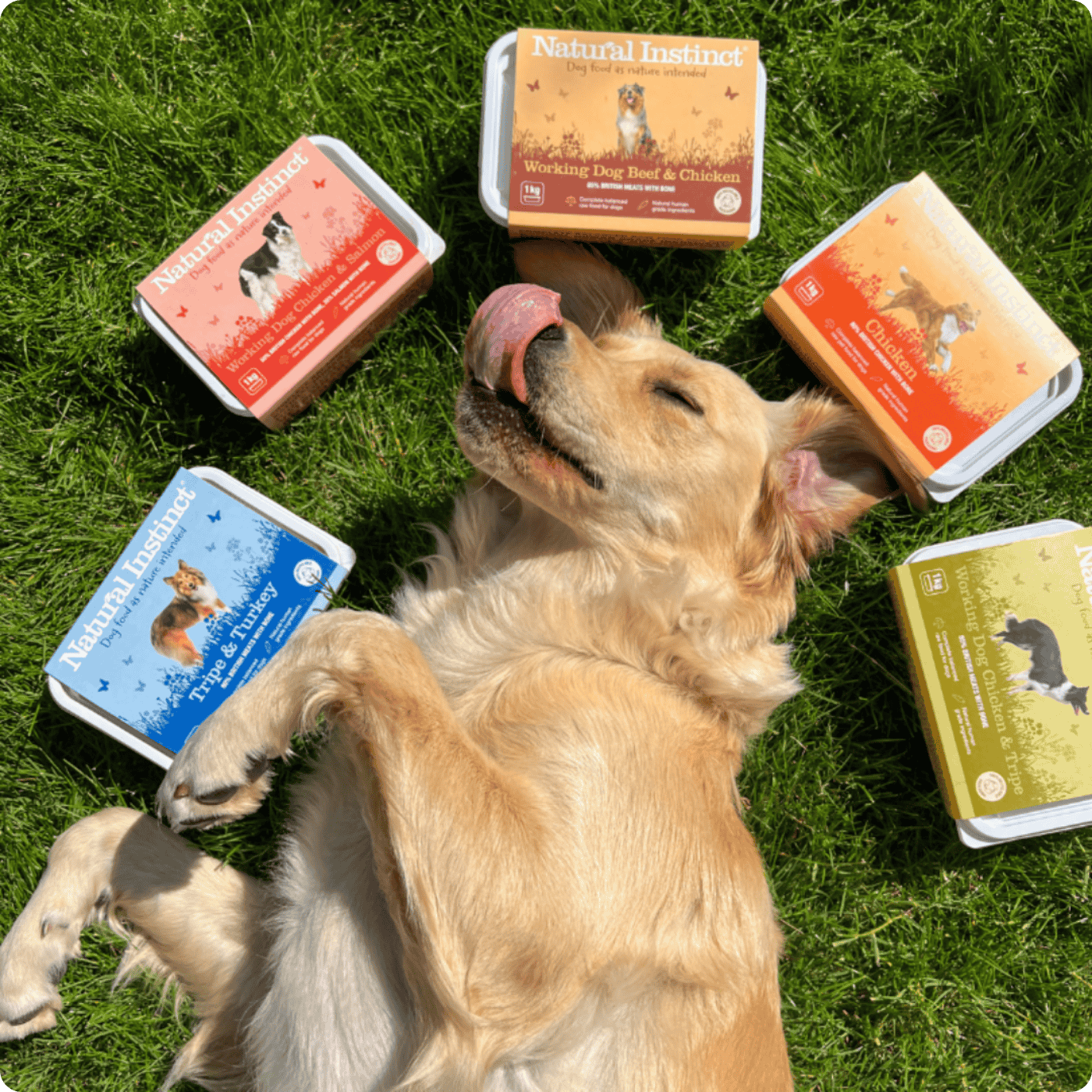
Days 3-10
On day 3, you would include 3 spoonfuls of raw so each day, you continue to gradually increase the amount of spoonfuls of raw and decrease the amount of the current food until your pet’s feeding bowl is full of yummy raw food!
What recipe should I use for the transition?
Adult
When transitioning your adult dog onto Natural Instinct, we would recommend a complete recipe that contains poultry and/or tripe*. This is because poultry is easily digestible and tripe is a natural source of digestive enzymes as well as a fantastic source of natural probiotics – this will help with supporting the gut with lots of good bacteria during the transition process.
Once fully transitioned to Natural Instinct, feed your adult dog 2-3% of their ideal bodyweight. We suggest keeping your dog on one recipe for around 3-4 weeks before gradually introducing different flavours. From there, we recommend feeding a mix of recipes to provide a balanced diet as well as variety in flavour.
Puppy
When transitioning a puppy onto Natural Instinct, we would recommend any of our Puppy recipes*. These are suitable for puppies from 8 weeks old.
All of our Puppy recipes are specifically formulated for puppies. We recommend your puppy remains on these recipes until they are at least 75% fully grown. This is to ensure they are getting the right nutrients to support their growth and development. A puppy needs to be fed 5-6% of their current weight. The feeding amount will need to be increased as the puppy grows so it’s good to keep an eye on your puppy’s weight to ensure you are feeding the correct amount. This is a guideline only. Variable factors like lifestyle, appetite and temperament can all impact a pet’s weight.
*Providing your pet does not have any allergies or intolerances to any of the ingredients. If they do, please contact us for advice.
Good to know...
If your dog or cat has a loose stool at any stage, we recommend reducing the amount of raw food for three days to stabilise the stool before returning to increasing the raw food levels.
If your pet is elderly or dealing with any complex chronic disease, e.g. end-stage cancers, is on antacids or high levels of immune-suppressive drug therapy, we would not recommend beginning the transition onto a raw diet without expert help from your vet.
For the first month of feeding raw, you can add digestive enzymes and probiotics to the diet if your dog or cat has any dietary issues or is prone to diarrhoea or constipation. Natural Instinct's Zoolac Propaste is great for this!
FAQ's
Whilst some dogs and cats will tolerate an immediate transition from one type of diet to another, there are several reasons why we recommend a gradual transition over a 7 to 10-day period, avoiding any unnecessary stomach upsets for your pet.
The enzymes required to break down a high protein, raw meat and bone diet differ from those needed to break down a high carbohydrate processed diet such as kibble. The pancreas must adapt to both the amount and type of enzymes it produces when the diet changes from one to the other.
The gut flora is different for dogs and cats fed on a predominantly meat and bone diet compared to a high starch and carbohydrate-based diet. After a significant diet change, it takes several weeks for the gut flora to restabilise. These gut bacteria are responsible for the production of certain key nutrients and are also responsible for the production of gas in the bowel.
The pH of the stomach is generally higher (more alkaline) in dogs and cats fed on a high carbohydrate processed diet compared with dogs and cats fed on a predominantly raw meat, high protein diet, which results in a strong acid stomach.
It is not only the process but also the speed at which the food types are digested that differs considerably. Raw meat and bone is digested a lot faster than processed food, which is high in carbohydrates.
For any dog or cat that has never eaten raw meat before, we recommend allowing a month to adjust to their new diet before introducing any additional bones. This enables the gut to stabilise and adapt to handling the breakdown of bone in their new diet of raw meat and bone. Excessive bone in their diet can lead to constipation.
Dogs need to learn how to chew bones. When introducing a bone to an adult dog that has never learnt how to handle bones, it is better to give a bone with sinew and fascia attached in larger pieces that cannot be swallowed whole, e.g. Natural Instinct Chicken Carcass. The dogs learn to use their back-crushing teeth to break down the bone before swallowing.
Puppies should only be given a Natural Instinct play bone when they have all their adult teeth.
Some dogs who have been on a high carbohydrate diet for a long time can initially appear hungry if the switch to raw is made too quickly. This is because their bodies are adapted to digest carbohydrates as the primary source of instant calories.
Try adding a small amount of additional carbohydrates, initially in the form of sweet potato. Soluble fibre foods can also help by making your dog feel fuller. Adding a few slices of butternut squash or carrot sticks between meals can help. You should avoid adding grain-based carbohydrates such as rice or pasta.
On a kibble diet, food will typically be given in relatively large volumes to provide the same number of calories as raw food. In the early days of transition, the smaller volume can leave some dogs not feeling full enough. This is where feeding raw bones, once the dog has settled on raw food, can keep them occupied and help while the stomach volume adapts.
At this point, it is important not to misinterpret a dog who now relishes his food as hungry. With many kibble diets, dogs do not rush to the bowl and eat with relish, which can be very different when feeding your dog a high-quality raw natural diet like Natural Instinct.
Make sure you monitor your dog’s weight in the early months of feeding raw to ensure you are feeding the right amount. Our Feeding Guides are just that, a guide only and the amount you feed will always depend on numerous factors.
We do not advocate feeding raw food and processed kibble simultaneously except during the 7-10 day transition period. This is because of the different ways the diets are digested, which, in turn, will compromise your pet's digestion.
If you feed a high carbohydrate food such as kibble alongside a high protein diet, any excess calories will be readily converted to fat and thus can lead to obesity.
Kibble is not necessary in either a cat's or dog's diet. In nature, both dogs and cats have a variety in the texture of their food and have a means of maintaining healthier teeth. This texture variety is not achieved with starchy, grain-based kibble but with crunching and chewing on raw meaty bones, just as nature intended.
Generally speaking, the transition for our canine friends is more straightforward than that for our feline friends, who can be slightly fussier about changing food.
If you free-feed your cat dry food, stop immediately! This does not necessarily mean you need to stop feeding dry with immediate effect but certainly pick up the bowl so your cat cannot eat it whenever they feel like it.
Dried kibble differs massively in taste and texture from a raw food diet, so switching to tinned food as a short interim step is advisable. This will get your cat accustomed to a meatier consistency in their meals. Try feeding half of their regular dry food with half tinned, then gradually reduce the amount of dried kibble over a few days.
When you have weaned your cat onto a tinned diet, apply the same principles when transitioning to raw. Feed half and half and gradually reduce the amount of tinned food over the course of a few days.
Never starve a cat to encourage them to eat. While it is okay for dogs to skip meals, cats must eat regularly to avoid hepatic lipidosis, a severe and sometimes fatal liver impairment.
Go at your cat's pace. Don't be afraid to backtrack a step or two if it means your cat will eat.
Bribe your cat! We recommend sprinkling some of our tasty treats on your cat's regular food so that your cat begins associating the smell of treats with their food. Then, gradually add the raw – it's all about the smell association!
Try splashing some warm water over the food before serving, as this could help to bring out the flavours.
Cats tend to 'imprint' on their food and recognise their favourites by sight and smell. It is important to shop for variety from the outset so that you can find your cat's favourite meal.
Most importantly, exercise a little patience. A change of diet is not something that happens overnight. Persevere, and your cat will thank you in the long run!
